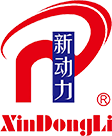Four Major Technical Difficulties For Power Lithium Batteries
- Categories:Ultrasonic Chemistry
- Author:
- Origin:
- Time of issue:2020-10-14
- Views:0
(Summary description)At present, due to the high manufacturing cost, the state is making high subsidies for electric vehicles.
Four Major Technical Difficulties For Power Lithium Batteries
(Summary description)At present, due to the high manufacturing cost, the state is making high subsidies for electric vehicles.
- Categories:Ultrasonic Chemistry
- Author:
- Origin:
- Time of issue:2020-10-14
- Views:0
At present, due to the high manufacturing cost, the state is making high subsidies for electric vehicles. The main reason for the high cost of electric vehicles is that the cost of lithium batteries is too high, and its cost has exceeded one-third of the entire vehicle. The high cost of lithium batteries is closely related to the chemical materials involved.
Cathode Material
The cathode materials of lithium batteries mainly include lithium cobalt oxide, lithium manganese oxide, nickel manganese cobalt ternary materials and lithium iron phosphate. Among them, lithium iron phosphate is regarded as an ideal cathode material by the industry due to its potential advantages in cycle life, safety and material cost that several other materials do not have. The current problems are that the main raw material of electronic grade lithium carbonate (the content of lithium carbonate is above 99.5%) is mostly imported, and the second is that the production technology of lithium iron phosphate also comes from abroad.
It is understood that the electronic pole lithium carbonate can be extracted from lithium ore or salt lake and then purified. my country's lithium resources rank second in the world, but due to technical problems, the output of domestic ore extracting lithium carbonate and then purifying it into electronic lithium carbonate is very low. There is no product available for the extraction of electronic grade lithium carbonate from the salt lake. Therefore, only a large amount of electronic grade lithium carbonate can be imported from abroad. Because of the large amount of imports, domestic companies basically have no pricing power, and foreign manufacturers have the final say.
In terms of technology, the development of lithium iron phosphate in my country has basically been synchronized with the international development, but the real leader has not yet been born in China, and the industry lacks original innovative technology. At present, there are mainly three leading companies in the lithium iron phosphate battery industry in the world, namely, Gaobo (A123) and Valence in the United States and Phostech (Phostech) in Canada. Lithium iron phosphate technology is regarded as a strategic technology abroad, and the governments of the United States, Canada and other countries will not hesitate to participate in the establishment of technical barriers with national power.
In the field of lithium iron phosphate materials, there are two core technology patents, one of which is coated carbon technology and the other is carbothermal reduction technology. The former is exclusively used by Canadian Fosterco and has already applied for a patent in my country. The patent right of the latter is owned by the American Gaobo Company, and has not yet applied for a patent in my country, but the company has now established two companies in Suzhou, responsible for the production of lithium iron phosphate materials and battery manufacturing. The core patents of lithium iron phosphate batteries are held by several foreign companies. The transfer of foreign company patents to Chinese companies will face high patent licensing fees, posing a huge potential threat to the industry.
In order to get rid of the low-end and passive position in the industry chain, efforts must be made from three aspects: First, to speed up domestic lithium iron phosphate patent applications through technology research and development. The second is to focus on the core patents of foreign companies in the periphery. The third is to strengthen research on battery structure design and battery assembly control.
Electrolyte
The electrolyte plays the role of conducting electrons between the positive and negative electrodes of the lithium battery, which is the guarantee for the advantages of high voltage and high specific energy of the lithium ion battery. Electrolyte is generally prepared from raw materials such as high-purity organic solvents, electrolyte lithium salts, and necessary additives under certain conditions and proportions.
Lithium batteries mainly use lithium perchlorate, lithium hexafluorophosphate, etc. However, batteries made of lithium perchlorate are not effective at low temperatures and may explode. Japan and the United States have banned their use. The battery made of fluorine-containing lithium salt has good performance, no explosion hazard, and strong applicability. In particular, the battery made of lithium hexafluorophosphate, in addition to the above advantages, the future disposal of waste batteries is relatively simple and environmentally friendly, so The market prospect of this type of electrolyte is very broad.
At present, the electrolyte supporting equipment has basically been domestically produced, but the weak point is the electrolyte lithium hexafluorophosphate, which accounts for about half of the electrolyte cost. There are basically no domestic companies that can produce it.
Currently, the lithium hexafluorophosphate market is covered by several Japanese companies such as Kanto Electrochemical Industry and Sutrek’s secret method.
(SUTERAKEMIFA), Morita Chemical and other monopoly. The global production capacity of lithium hexafluorophosphate is about 4,000 tons per year. The three Japanese manufacturers have a production capacity of 3430 tons per year, accounting for about 85% of the global production capacity. The current production capacity of Tianjin Jinniu Power Material Co., Ltd. is only 250 tons per year, and it is not sold. The lithium hexafluorophosphate used by domestic electrolyte manufacturers is mainly imported from Japan and Germany.
The main reason for this situation is that the technical threshold of lithium hexafluorophosphate is quite high. Lithium hexafluorophosphate requires high purity and low moisture, but because the product itself is easy to absorb moisture and decompose, it is extremely difficult to produce, and it has strict requirements on raw materials and equipment. It is a typical high-tech, high-risk production environment, and high-difficulty production. . The three main raw materials of lithium hexafluorophosphate are phosphorus pentachloride, anhydrous hydrofluoric acid and lithium fluoride. Among them, the production of the latter two is the most difficult and requires domestic enterprises to make breakthroughs in production processes.
Diaphragm
The separator plays a role in preventing the short circuit of the positive and negative electrodes in the lithium battery, and provides a lithium ion transport channel during the charging and discharging process of the lithium battery. In short, the diaphragm is a porous plastic film. But it directly affects the battery capacity, cycle performance and safety performance. Among the components of lithium batteries, it has the highest technical content, accounting for 20% to 30% of the cost of lithium batteries. At present, 80% of lithium battery separators in my country rely on imports.
The reason for the high technical content of membrane lies in the difficulty of its hole-making process. At present, the mainstream products of diaphragms in the world are single-layer polypropylene (PP) nanoporous membranes, single-layer polyethylene (PE) nanoporous membranes, and PP/PE/PP three-layer composite nanoporous membranes that have been precisely stretched horizontally and vertically. Porous membrane and other types. The production of PE and PP diaphragms by bidirectional precision stretching is a multi-step, complex and precise processing process, including blow molding, cast film making, continuous precision stretching and other important links. There is a big gap between domestic diaphragms and foreign countries in thickness uniformity and hole uniformity. At present, the international and domestic markets are basically controlled by several powerful foreign manufacturers, such as Celgard and Entek in the United States, Asahi Kasei and Tonen in Japan.
Many domestic companies are trying to break through foreign technical barriers and develop lithium battery separators, but it is difficult. The difficulty is mainly reflected in the following three aspects: First, the related patents of the traditional diaphragm preparation process are basically monopolized by a few companies in the United States and Japan, and China lacks independent intellectual property rights in production technology; second, domestic companies have key technologies in the production of diaphragms. In particular, the industrialization technology is relatively lacking. Many companies can often produce better samples in small-scale tests, but the consistency of products in large-scale production is poor; third, China's research on new processes and new methods compares favorably with international ones. Synchronous, but new processes often have higher requirements for equipment and process control. China’s precision processing equipment is relatively weak, which restricts industrialization.
Despite the difficulty, domestic diaphragms have already started. Now some domestic companies have made some technological breakthroughs in localization, such as Shenzhen Xingyuan Material Technology Co., Ltd., Foshan Jinhui High-tech Optoelectronic Materials Co., Ltd., Henan Xinxiang Green New Energy Materials Co., Ltd., etc. Both have produced lithium battery separators with independent intellectual property rights, but most of them are currently supplied to the middle and low-end markets, and further maturity of membrane technology is needed.
With the gradual promotion of new energy vehicles, by 2012, it is expected that new energy vehicles will increase the demand for lithium battery separators by 10 times. Solving the problem of localization of diaphragms will have revolutionary significance not only for the lithium battery industry, but also for the development of the entire electric vehicle industry.
Negative Electrode
Anode materials have relatively low technical content. Graphite is generally used as the anode, which is the only material that has been industrialized among the four key components of domestic lithium-ion batteries.
Domestic enterprises have done quite a lot in low-tech fields. Shenzhen Beterui New Energy Materials Co., Ltd. and Shanghai Shanshan Technology Co., Ltd. have become world-class companies. Among them, Shenzhen Beiterui's market share has ranked second in the world. Customers include more than 130 manufacturers such as Panasonic, Samsung, Hitachi, and BYD.
However, although graphite anode materials have been successfully commercialized, because carbon as a negative electrode always has some insurmountable weaknesses, it will definitely be replaced by non-carbon materials in the future. Because graphite forms a passivation film in the electrolyte, although the film can transfer lithium ions, it will cause energy loss. Moreover, when the battery is overcharged, metallic lithium will precipitate on the surface of the graphite negative electrode, causing the battery to short circuit. As the temperature increases, the graphite negative electrode in the lithium-intercalated state will first have an exothermic reaction with the electrolyte, which may generate flammable gas and burn. Therefore, graphite is not the most ideal negative electrode material, and looking for better non-carbon negative electrode materials is an important subject of lithium-ion battery research.
Although people have extensively studied various non-carbon anode materials, especially in recent years, nano-structured non-carbon anode materials such as tin composite oxides, titanium oxide compounds and titanate compounds have attracted the attention of many lithium battery workers. However, there are still many problems with these materials that have not been solved and still cannot be applied in large quantities. Continuous improvement of production routes and processes is required.
Scan the QR code to read on your phone
相关资讯






Copyright©2020 Guangzhou Xindongli Ultrasonic Electronic Equipment Co. , Ltd. 粤ICP备05019331号
CONTACT: Miss Chung 13802999273, Tel: 020-61089842 , Email: 13802999273@139..com , QQ: 2355699680





